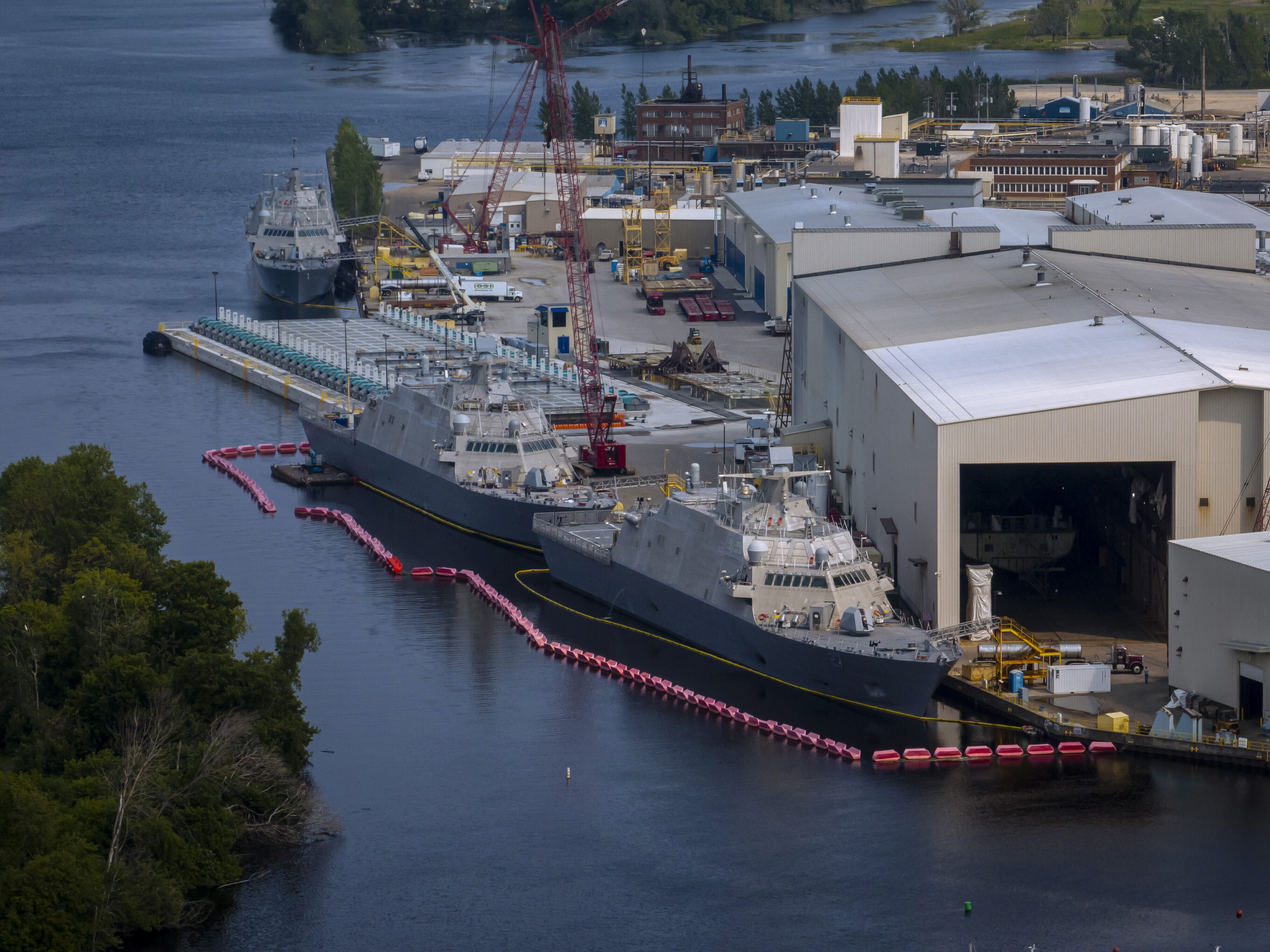
For the U.S. Navy to achieve a proposed plan to expand its fleet of battle force ships, the service would need to spend $40.1 billion on shipbuilding every year through 2054, for a total of more than $1 trillion, according to new analysis from the Congressional Budget Office.
Over the next 30 years, the Navy wants to grow its fleet of battle force ships to 381 to face swelling global threats, according to the service’s most recent proposal. There are currently 295 in the fleet, and that number is expected to drop to 283 ships in 2027, when the Navy is planning to retire 13 more ships than it will commission.
“The pace of shipbuilding would be fastest in the early 2030s, reflecting the service’s desire to increase the size of the fleet as quickly as feasible,” the Congressional Budget Office said of the Navy’s proposal.
The office, which provides cost estimates of proposed legislation, estimated the plan for the future fleet would require Congress to fund the Navy at levels 46% higher than the average annual funding the service has received over the past five years.
By 2054, the Navy would need a total yearly budget of $340 billion — one-third more than its $255 billion budget today. About $40 billion of that increase would be spent on continued shipbuilding, while the remaining $45 billion would go toward the costs of operating and maintaining the existing ships and purchasing weapons for them.
The estimates from the Congressional Budget Office came in 8% to 16% higher than the Navy’s own projections. The office said it took into account that some ships have taken longer and been more difficult to build than the Navy has previously anticipated, and the designs have proved more complicated to complete. The Navy’s cost estimates for some ships were also unrealistically low, the analysis says.
The Congressional Budget Office described the cost of the shipbuilding plan as high when compared with both recent funding levels and historical standards. Funding for ship construction has climbed in the past 10 years, reaching the highest levels since former President Ronald Regan pursued the idea of a 600-ship Navy in the 1980s, the office said.
“Since 2015, lawmakers have appropriated an average of $2.5 billion more per year for shipbuilding than the president has requested, partly because of concerns that the fleet is too small to perform all of its missions,” the analysis says.
In order to make plans for the future fleet a reality, the country’s shipyards would also need to drastically increase their productivity from what they’ve achieved over the past decade, the Congressional Budget Office reported.
Navy shipbuilding is in “a terrible state” — the worst in a quarter century, Eric Labs, a longtime naval analyst at the Congressional Budget Office, told The Associated Press in August.
“I feel alarmed,” he said. “I don’t see a fast, easy way to get out of this problem. It’s taken us a long time to get into it.”
The shipbuilding industry has faced cost overruns and labor shortages that have set the production of some ships years behind schedule.
That was the case with the Nimitz-class aircraft carrier George Washington, which began its midlife refueling in August 2017. The refueling occurs halfway through a carrier’s 50-year service life to refuel the nuclear power reactor and conduct significant repairs and upgrades. While a refueling typically lasts four years, Newport News Shipbuilding didn’t complete the work until nearly six years later, in May 2023, according to a Navy statement.
The carrier underwent inspections and certifications for 10 months, and in November it arrived in Yokosuka, Japan, as the United States’ only forward-deployed aircraft carrier, the Navy said.
Under the Navy’s newest proposal for its fleet, aircraft carrier construction would remain fairly steady, the Congressional Budget Office said. But the tonnage of submarines, surface combatants and amphibious warfare ships under construction from 2030 to 2054 would be 50% higher on average than it is today.
Nikki Wentling covers disinformation and extremism for Military Times. She’s reported on veterans and military communities for eight years and has also covered technology, politics, health care and crime. Her work has earned multiple honors from the National Coalition for Homeless Veterans, the Arkansas Associated Press Managing Editors and others.


